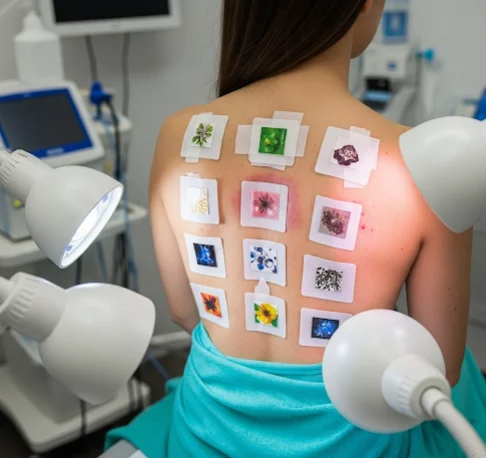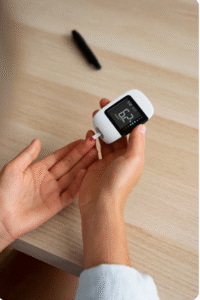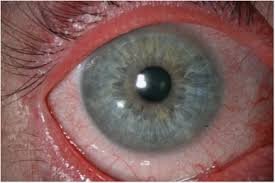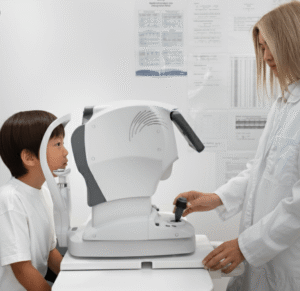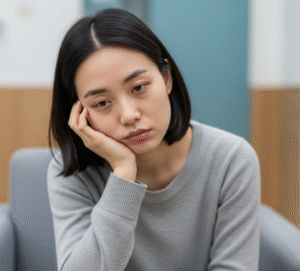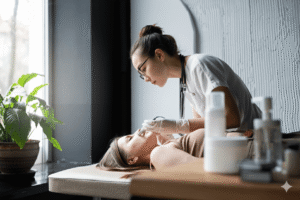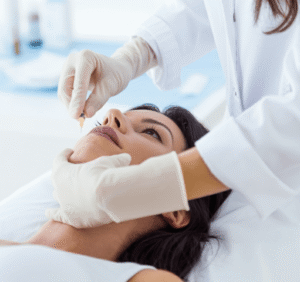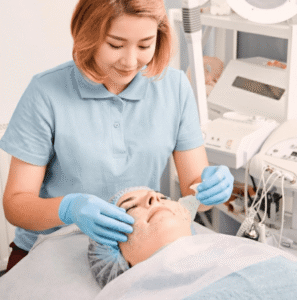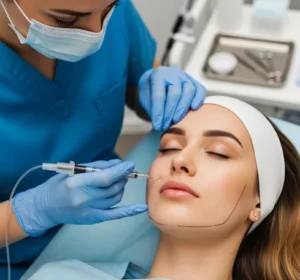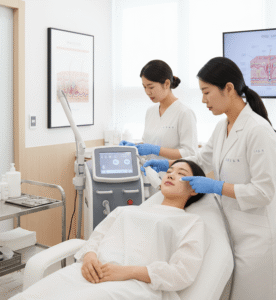What It Is
Defining Photoallergy
→ Photoallergy is a skin reaction that occurs when certain chemicals applied to the skin interact with ultraviolet (UV) light, triggering the immune system to produce an allergic response.
→ Common triggers include sunscreens, fragrances, antibiotics, and anti-inflammatory creams that, when exposed to sunlight, cause eczema-like rashes, redness, and itching.
→ Photoallergy testing is a diagnostic procedure that combines patch testing and controlled light exposure to identify substances that trigger allergic skin reactions in sunlight.
→ In Korea, dermatology clinics and university hospitals offer advanced photopatch testing protocols to help patients pinpoint allergens and safely manage sun-related skin reactions.
Key Characteristics of Photoallergy
- Red, itchy, eczematous rash on sun-exposed areas (face, arms, neck, chest)
- Delayed reaction → symptoms appear 24–72 hours after sun exposure
- Triggered by products like sunscreens, cosmetics, perfumes, or medications
- Often confused with phototoxic reactions (which occur immediately and are not immune-mediated)
- Requires specialized diagnostic testing for confirmation
Why It’s Done
Main Reasons for Photoallergy Testing
➡ Identify Allergens – Helps pinpoint the specific product or chemical causing the rash.
➡ Differentiate from Phototoxicity – Clarifies whether reaction is allergic (immune) or toxic (chemical burn).
➡ Guide Safe Skincare Choices – Patients learn which sunscreens, lotions, or medications to avoid.
➡ Prevent Chronic Sun Dermatitis – Reduces repeated flare-ups and skin damage.
➡ Improve Quality of Life – Restores confidence in using skincare and enjoying outdoor activities.
Alternatives
Non-Medical Alternatives
- Avoidance of Suspected Products → Eliminating sunscreens or cosmetics one by one.
- Sun Protection → Wearing protective clothing, hats, and avoiding peak sunlight.
- Trial-and-Error Skincare → Switching brands, though this is less precise without testing.
Medical Alternatives
→ If full photoallergy testing is not available:
- Standard Patch Testing → Detects allergens but without UV exposure.
- Clinical Observation → Doctors may trial withdrawal of medications or products.
- Phototesting Alone → Determines UV sensitivity but does not identify chemicals.
Preparation
Before Photoallergy Testing in Korea
➡ Dermatology Consultation – Doctor reviews history of rash, sunscreen/cosmetic use, and medication.
➡ Discontinue Certain Medications – Antihistamines, corticosteroids, or immunosuppressants may need to be stopped before testing.
➡ Avoid Sun Exposure – To prevent interference with test results.
➡ Bring Skincare Products – Patients are often asked to bring their own sunscreens, creams, and cosmetics for testing.
➡ Counseling – Doctors explain the process, duration (several days), and possible discomfort.
How It’s Done
Photopatch Test Procedure in Korea
Step 1: Patch Application
→ Small amounts of common allergens and patient’s own skincare products are applied to the upper back using special adhesive patches.
Step 2: Occlusion Period
→ Patches remain in place for 24–48 hours without removal or moisture.
Step 3: Patch Removal
→ Patches are removed, and one set of test sites is covered, while another set is exposed to UV light.
Step 4: UV Light Exposure
→ A controlled dose of UVA light is applied to the uncovered test sites.
- This simulates sun exposure in a safe, standardized way.
Step 5: Reading Reactions
→ Dermatologists examine skin at 48 hours, 72 hours, and sometimes 96 hours.
- Positive allergic reaction → redness, swelling, eczema-like rash only after UV exposure.
- If both covered and exposed areas react → standard contact allergy.
Step 6: Interpretation and Reporting
→ Doctors identify which chemical caused the allergy and provide a list of products to avoid.
Recovery
Immediate Recovery
- Mild redness or itching may occur at test sites, usually temporary.
- Rarely, stronger allergic reactions may require soothing creams or antihistamines.
Long-Term Recovery
→ Once allergens are identified, patients experience fewer flare-ups by avoiding triggers.
→ Many Korean clinics provide personalized skincare recommendations and safe sunscreen lists.
→ Recovery includes education on sun protection and allergy management.
Complications
Risks Without Testing
- Ongoing Rash → Patients may continue using triggering products unknowingly.
- Misdiagnosis → Reactions may be mistaken for eczema, rosacea, or lupus.
- Chronic Dermatitis → Long-term photoallergy may lead to persistent pigmentation or skin thickening.
Risks With Testing
- Mild Discomfort → Temporary itching or redness at test sites.
- False Positives/Negatives → If results are misinterpreted or if patient took interfering medications.
- Flare of Original Allergy → Rarely, the test can trigger a stronger rash.
Treatment Options in Korea
Why Korea Excels in Photoallergy Testing
➡ Advanced Photopatch Protocols – Korean dermatology hospitals follow international guidelines for reliable results.
➡ Access to Wide Allergen Panels – Includes sunscreens, cosmetics, preservatives, and fragrances common in Korean skincare products.
➡ Integration of Cosmetic Dermatology – Clinics provide safe alternatives for sensitive patients.
➡ Collaboration Between Dermatology and Allergy Specialists – Ensures holistic care for patients with multiple sensitivities.
Patient Experience in Korea
- Tests are usually conducted over 3–4 days in dermatology clinics or hospitals.
- Patients are guided through the process with detailed instructions and follow-up visits.
- After results, patients often receive:
- A list of allergens to avoid
- A safe skincare product guide
- Education on UV avoidance and sun care practices
- Korean clinics also emphasize cosmetic satisfaction, recommending hypoallergenic and dermatologist-tested sunscreen brands.
Conclusion
Photoallergy testing in Korea is a specialized diagnostic tool that identifies skin allergies triggered by sunlight and specific chemicals.
Through photopatch testing, controlled UV exposure, and expert interpretation, Korean dermatologists provide accurate diagnoses and personalized care plans.
By combining allergy expertise, advanced dermatology, and cosmetic guidance, Korea ensures that patients with photoallergies regain both skin health and confidence in managing sun-related reactions.
For anyone experiencing unexplained sun-triggered rashes, Korea offers some of the most advanced and reliable photoallergy testing programs worldwide.

